Our Library
Explore our publications, from research papers and series to educational materials, covering all aspects of conflict transformation and peace promotion.

Resistencia no violenta en las asimetrías de poderHandbook Article
[Resumen traducido automáticamente] Este artículo examina la contribución de la resistencia noviolenta a los procesos de transformación de conflictos. Revisa los desarrollos conceptuales y empíricos en el campo de la resistencia noviolenta (tendencias tanto 'de principios' como 'pragmáticas'), y examina los roles que desempeña la acción noviolenta en apoyo del establecimiento y la consolidación de la paz, transformando las relaciones de poder desequilibradas en preparación para las negociaciones de conflictos. y mediante el uso de estrategias de conflicto autolimitadas que reducen la polarización entre partidos y fomentan las prácticas democráticas. Las ilustraciones empíricas se extraen de la primera intifada palestina (1987-1993).
- Year2012
- Author(s)Véronique Dudouet
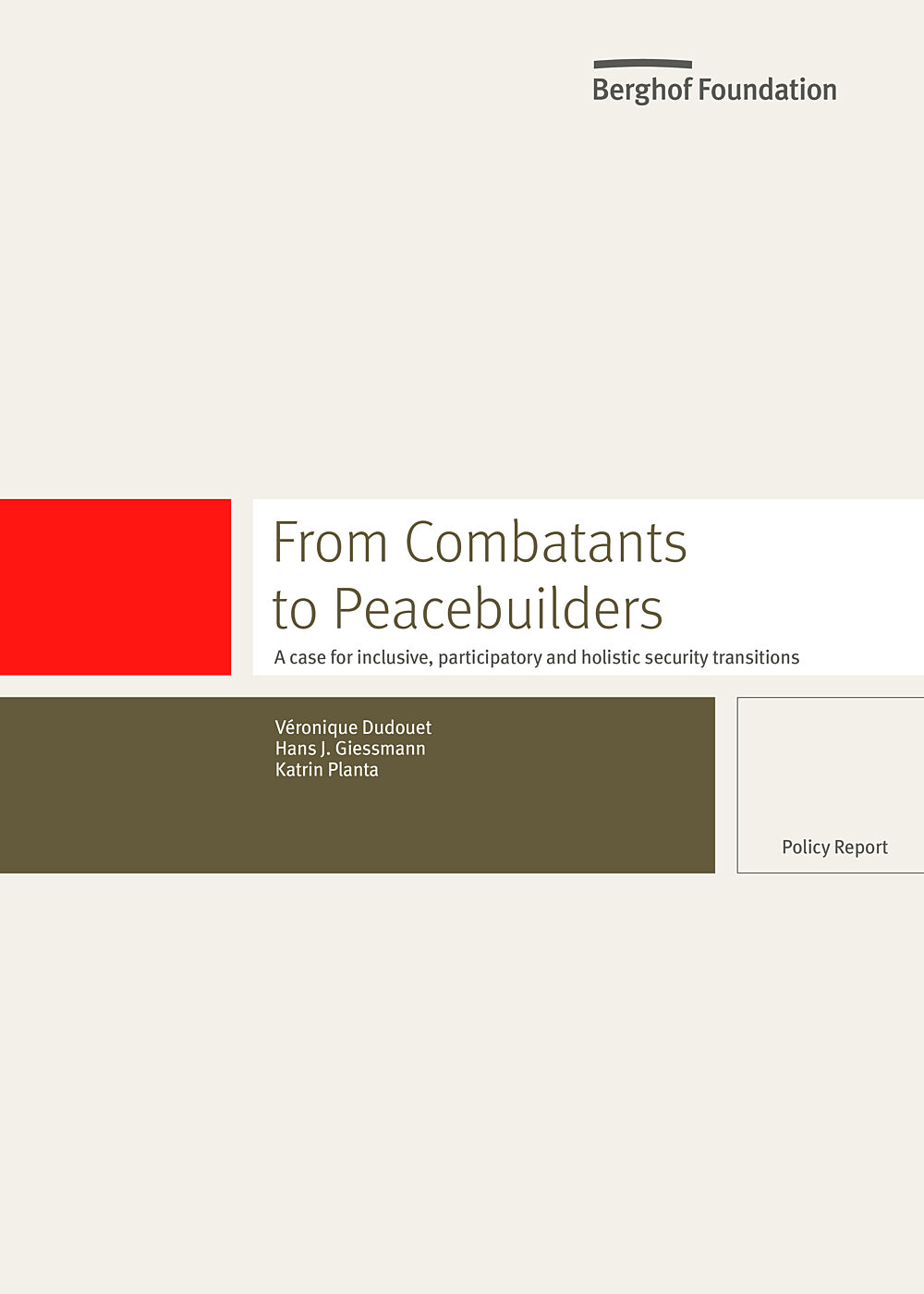
From Combatants to PeacebuildersA Case for Inclusive, Participatory and Holistic Security Transitions
There has been an increasing tendency to view all armed actors as ‘spoilers’ to be fought at all costs or, at best, pacified through disarmament, demobilization and reintegration (DDR), rather than as agents of change who can play constructive roles in securing peace and building more legitimate states. The purpose of this report is to present key policy-relevant findings from a two-year participatory research project on the timing, sequencing and components of post-war security transitions, from the perspective and self-analysis of conflict stakeholders who have made the shift from state challengers to peace-and state-building agents in South Africa, Colombia, El Salvador, Northern Ireland, Kosovo, Burundi, Southern Sudan, Nepal and Aceh.
- Year2012
- Author(s)Véronique Dudouet, Hans-Joachim Giessmann, Katrin Planta
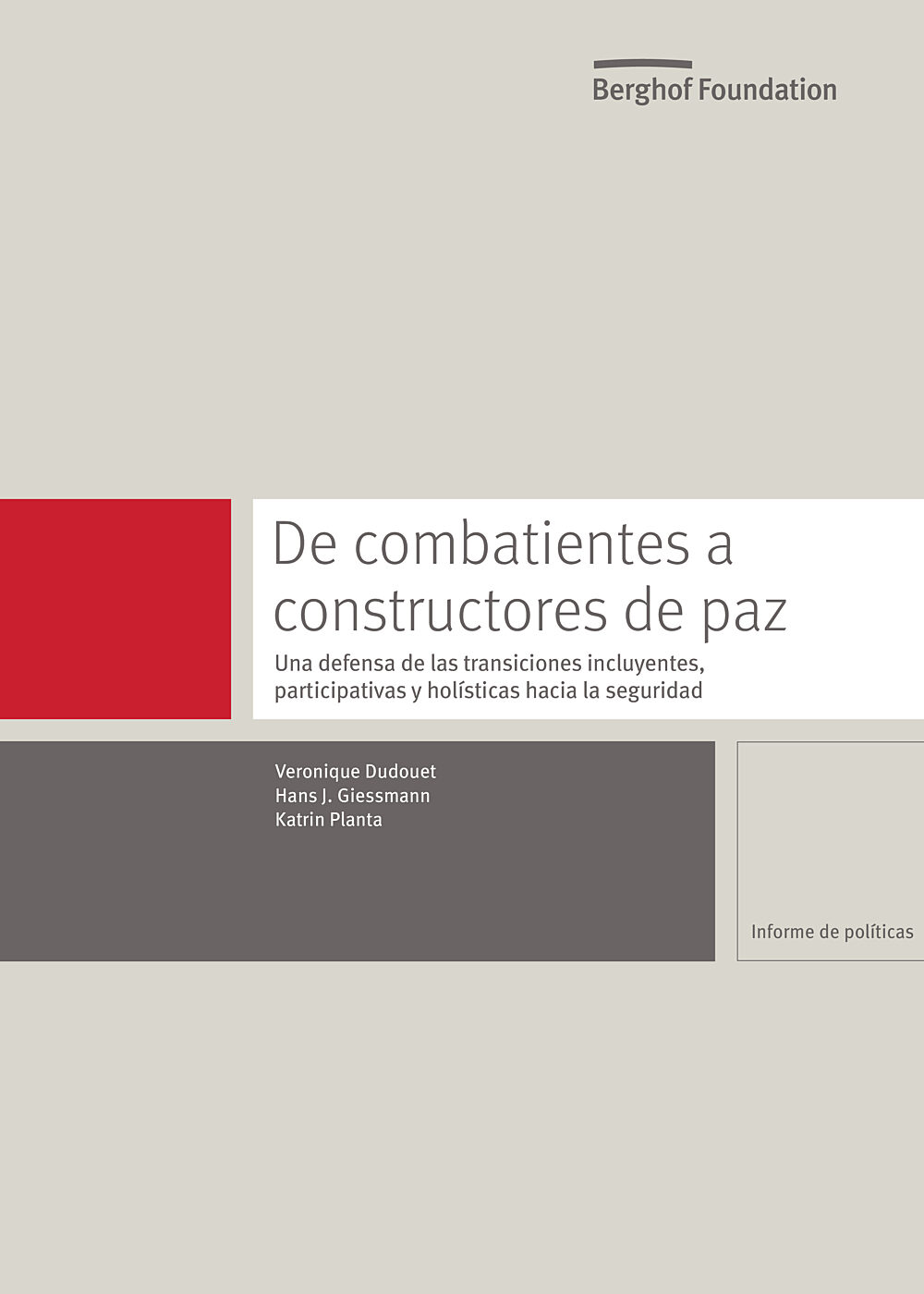
De Combatientes a Constructores de PazUna Defensa de las Transiciones incluyentes, participativas y holísticas hacia la Seguridad
La ‘guerra contra el terrorismo’, lanzada por el gobierno de los Estados Unidos y sus aliados luego de los ataques del 11 de septiembre de 2001 en Nueva York y Washington, transformó profundamente el entorno geopolítico de la última década. En particular, la preponderancia de los enfoques de línea dura en materia de seguridad respecto de los conflictos inter- e intra-estatales han llevado a que todas las formas de insurgencia armada en contra del orden sociopolítico establecido se interpreten, de manera general, a través del lente del ‘terrorismo’, sin tener en cuenta la naturaleza de esos actores, su grado de legitimidad social o sus roles y aspiraciones políticas. Esas tendencias han afectado severamente las dinámicas de los conflictos armados, así como el desarrollo de los procesos de paz y los entornos de posguerra. De hecho existe una tendencia creciente a considerar a todos los actores armados como ‘corruptores de la paz’ a quienes hay que combatir a toda costa, o al menos pacificar mediante el desarme, la desmovilización y la reintegración (DDR), en lugar de verlos como agentes de cambio que pueden desempeñar papeles constructivos en el logro de la paz y la construcción de estados más legítimos.
- Year2012
- Author(s)Véronique Dudouet, Hans-Joachim Giessmann, Katrin Planta

De Combattants à Constructeurs de PaixPlaidoyer pour des Transitions Sécuritaires Inclusives, Participatives et Holistiques
La ‘guerre contre la terreur’, lancée par le gouvernement des Etats Unis (EU) et ses alliés à la suite des attaques du 11 septembre 2001 à New York et à Washington, a profondément transformé l’environnement géopolitique de la dernière décennie. La dominance des approches militaires et policières face aux conflits inter- et intra-étatiques a conduit à une interprétation généralisée de toutes les formes d’insurrections armées défiant l’ordre socio-politique établi à travers le spectre du ‘terrorisme’, et ce, indépendamment de la nature de tels acteurs, de leur degré de légitimité sociale et de leurs rôles et aspirations politiques. De telles tendances ont considérablement affecté non seulement les dynamiques des conflits armés, mais aussi le déroulement des processus de paix et les environnements d’après-guerre. Il est de plus en plus courant de considérer tous les acteurs armés comme des ‘saboteurs’ à combattre à tout prix ou, au mieux, à pacifier par le désarmement, la démobilisation et la réintégration (DDR), plutôt que comme des agents du changement capables de jouer un rôle constructif dans la stabilisation de la paix et la construction d’Etats plus légitimes.
- Year2012
- Author(s)Véronique Dudouet, Hans-Joachim Giessmann, Katrin Planta

The Art of Seeing: Investigating and Transforming Conflicts with Interactive TheatreHandbook Article
Takes as its starting point the uncertainty that remains central in post-war situations even though direct physical threats from through warring factions have been successfully brought to an end. The legacy of the war usually includes a society that is divided into different factions that have hardly any constructive relationships with each other and that lacks a ‘conflict culture’.
- Year2012
- Author(s)Hannah Reich
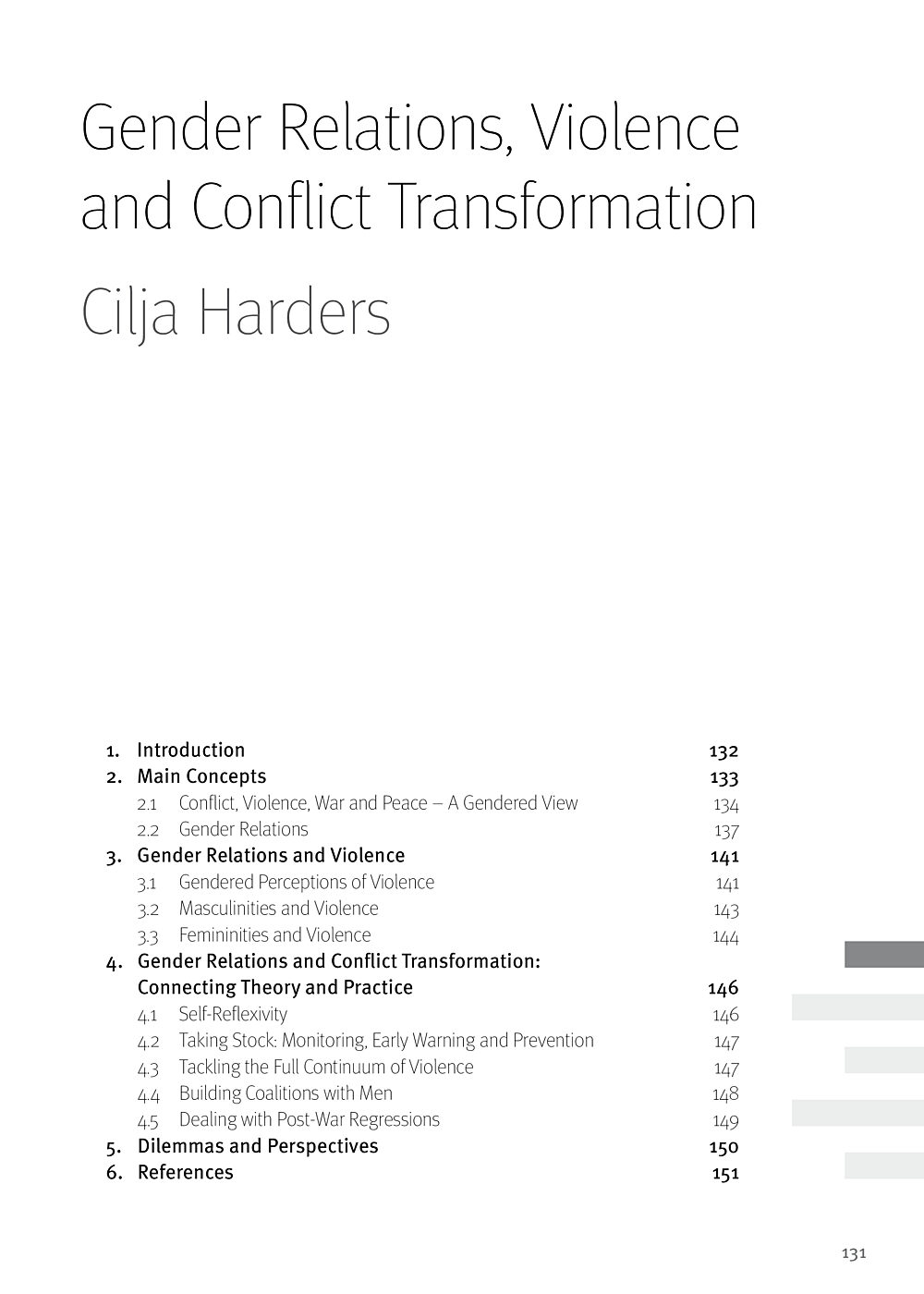
Gender Relations, Violence and Conflict TransformationHandbook Article
- Year2011
- Author(s)Cilja Harders
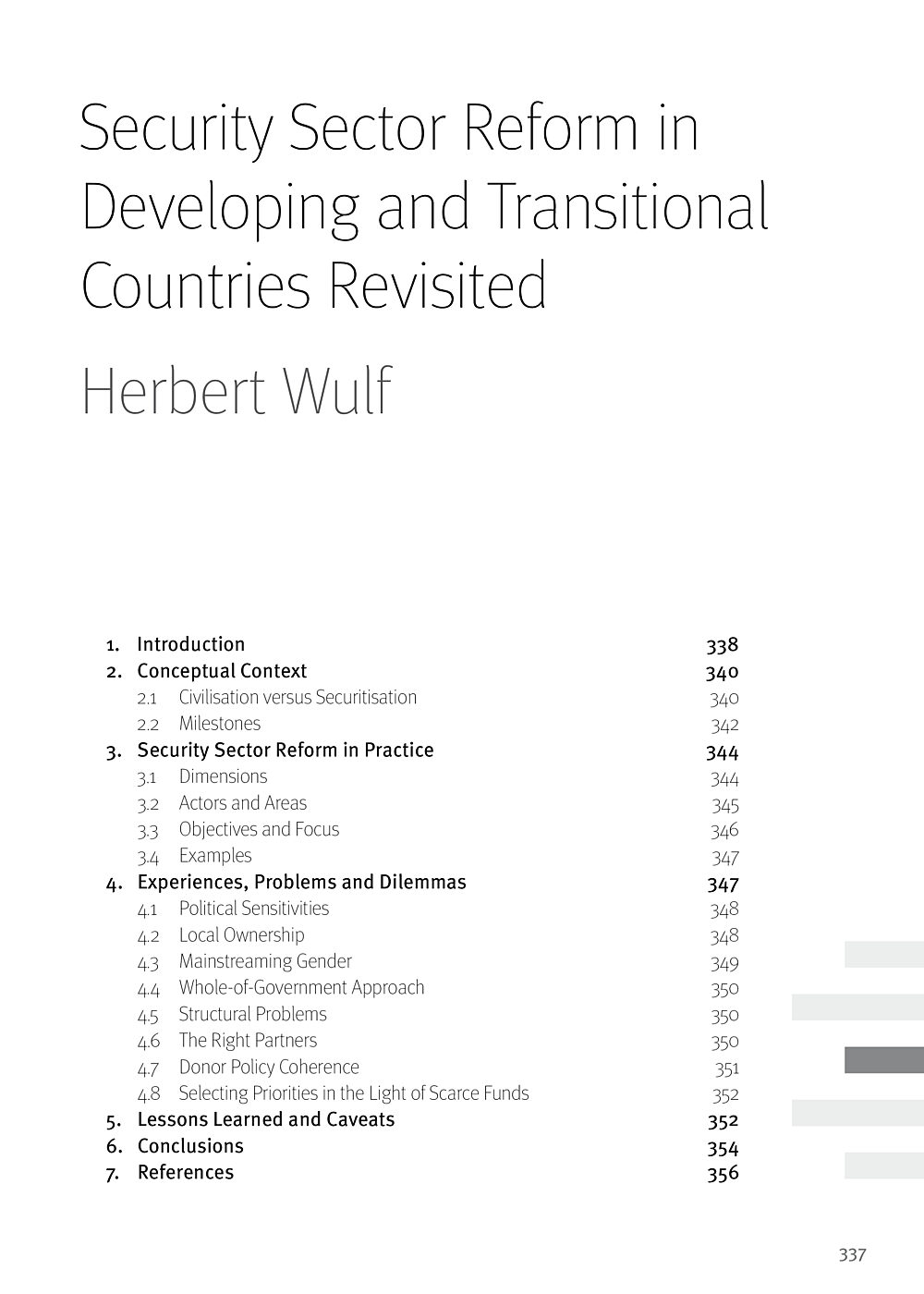
Security Sector Reform in Developing and Transitional Countries RevisitedHandbook Article
- Year2011
- Author(s)Herbert Wulf
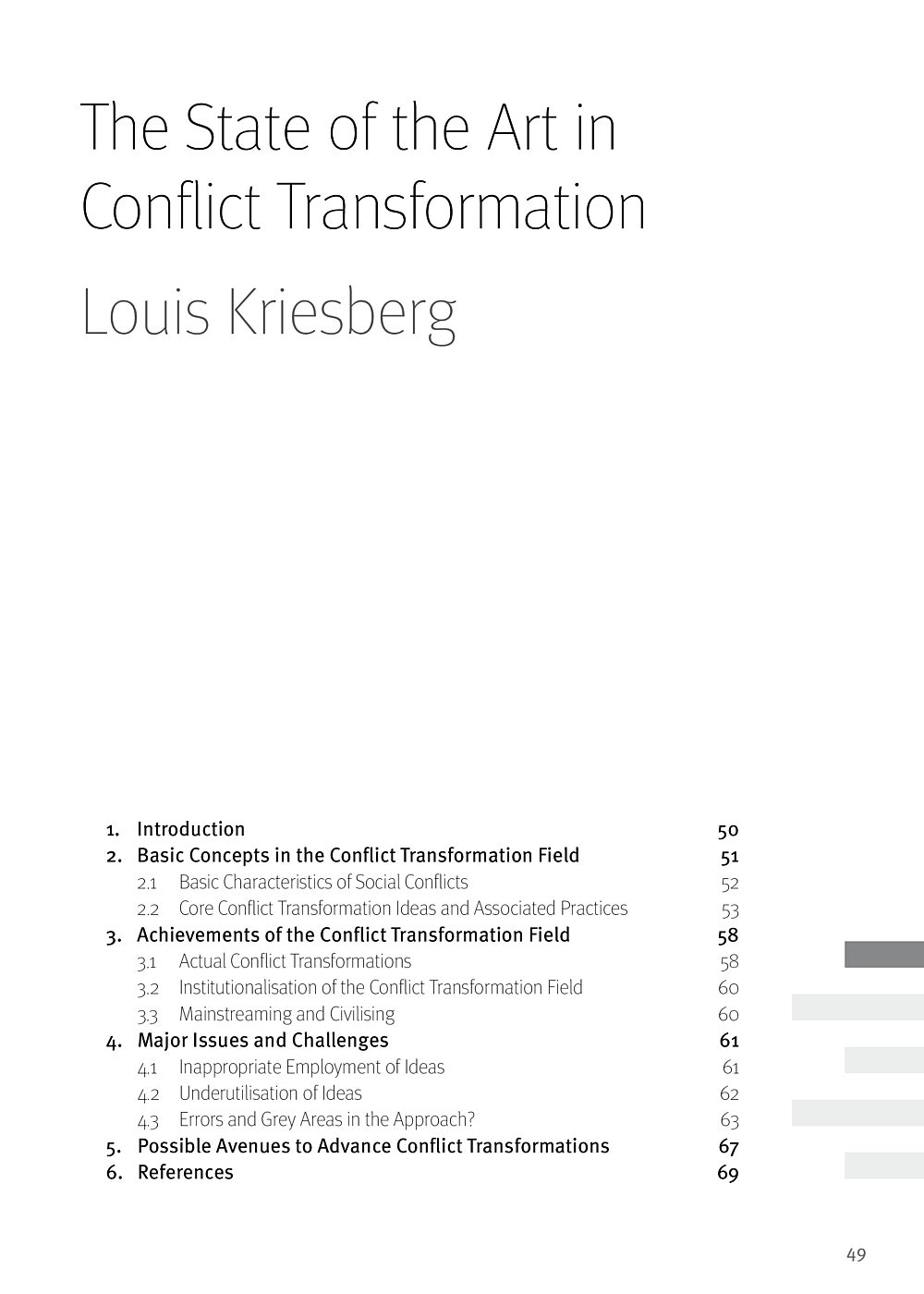
The State of the Art in Conflict TransformationHandbook Article
- Year2011
- Author(s)Louis Kriesberg
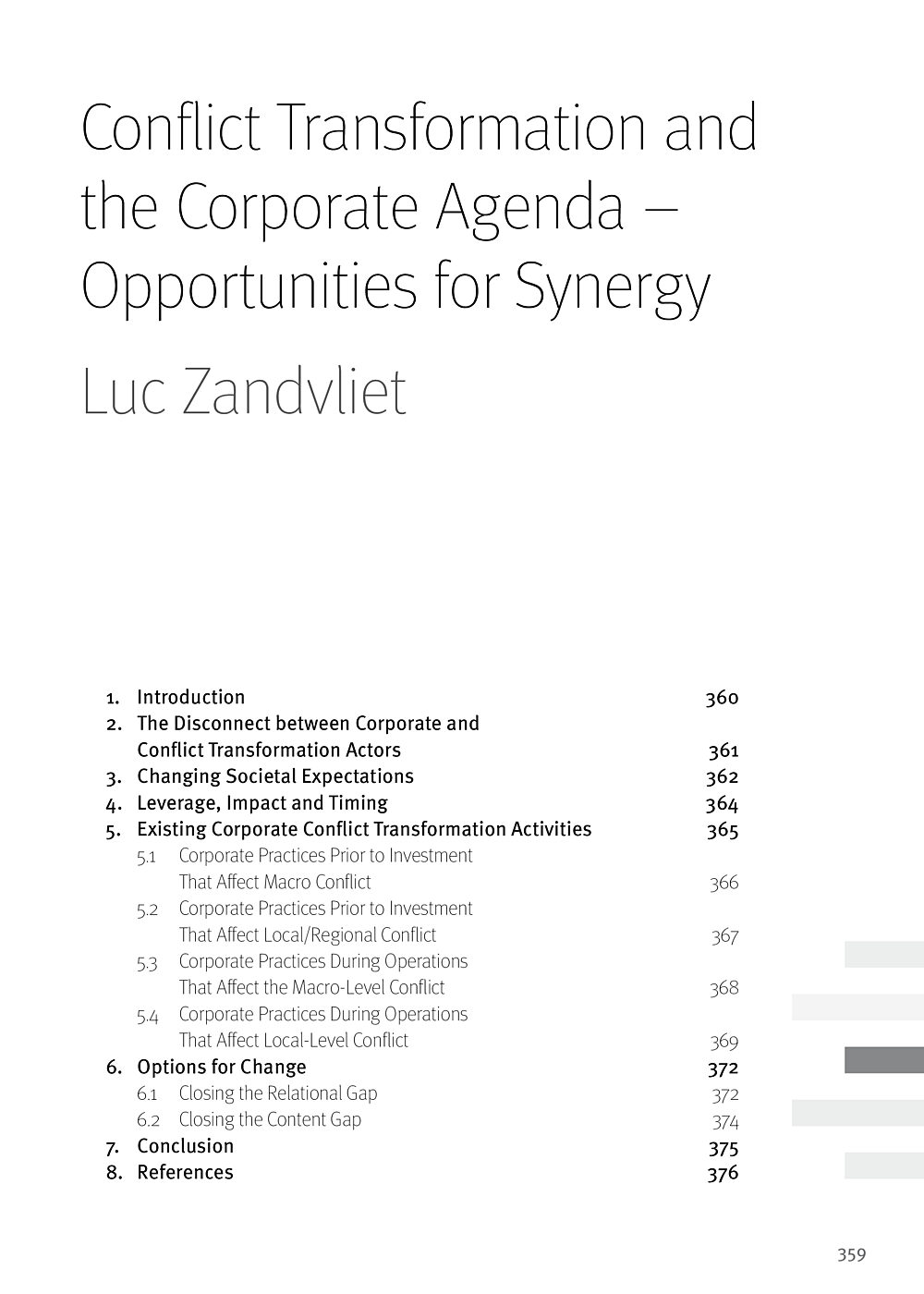
Conflict Transformation and the Corporate Agenda - Opportunities for SynergyHandbook Article
- Year2011
- Author(s)Luc Zandvliet

Evaluating Peacebuilding: Not Yet All It Could BeHandbook Article
- Year2011
- Author(s)Cheyanne Scharbatke-Church